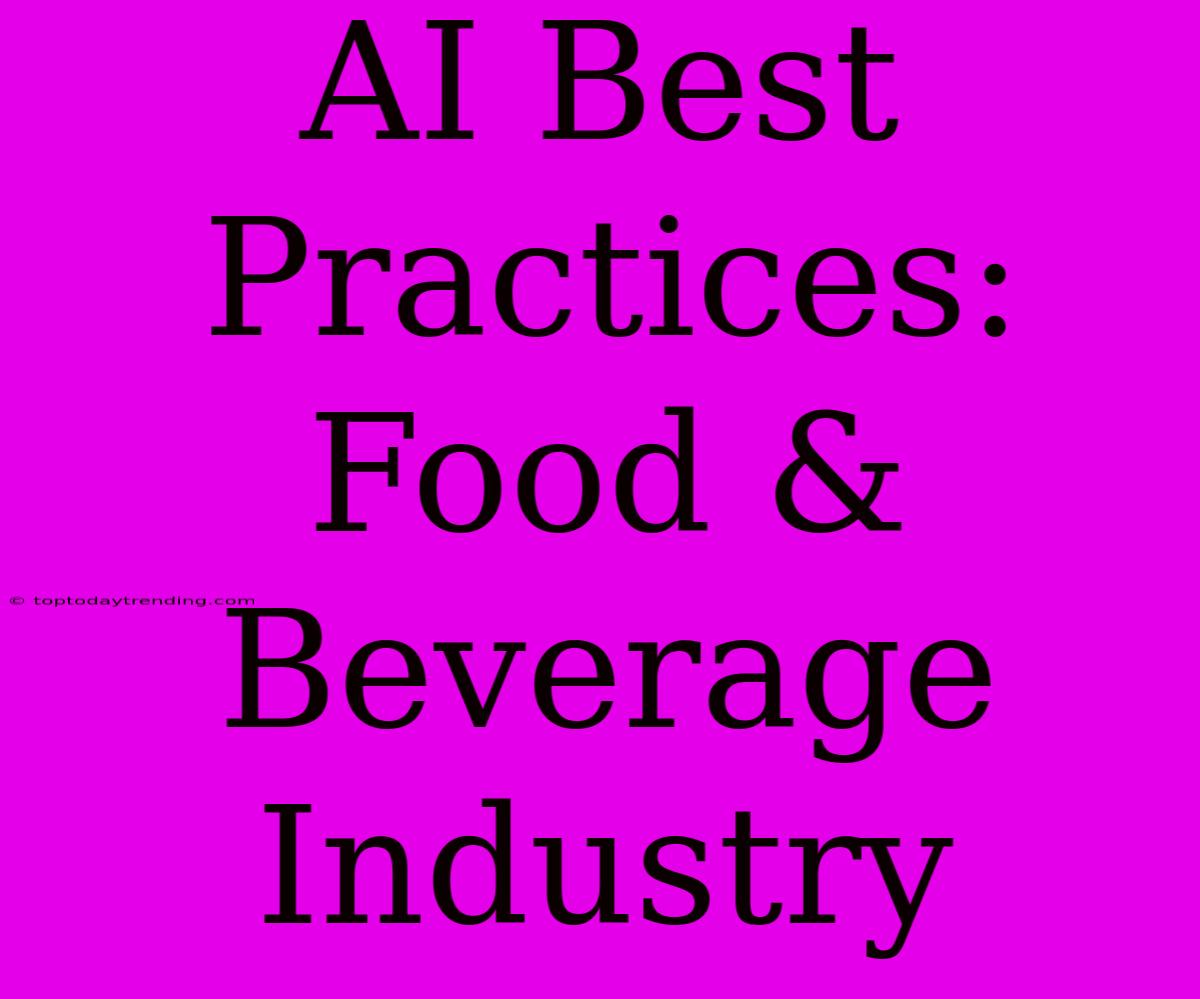AI Best Practices: Food & Beverage Industry
The food and beverage industry is undergoing a dramatic transformation, fueled by the rise of artificial intelligence (AI). From optimizing production lines to predicting consumer preferences, AI is revolutionizing every stage of the food supply chain. However, implementing AI successfully requires a strategic approach and adherence to best practices. This article delves into key AI best practices for the food and beverage industry, outlining how organizations can leverage this technology to gain a competitive edge.
1. Define Clear Goals and Objectives:
Before embarking on an AI journey, clearly define your goals and objectives. What specific challenges are you trying to address? Are you looking to improve efficiency, enhance product quality, or personalize customer experiences? Establishing clear objectives will guide your AI strategy and ensure you measure success effectively.
2. Start with a Specific Problem:
Don't attempt to solve everything with AI at once. Focus on a single, well-defined problem or use case. For example, you might choose to optimize your inventory management system or predict consumer demand for specific products. This allows you to test the waters, gather insights, and demonstrate the value of AI before scaling it across your operations.
3. Secure and Prepare Data:
AI thrives on data. Ensure you have access to high-quality, relevant data that is properly structured and cleaned. This might include historical sales data, production records, customer feedback, and market trends. Invest in data governance processes to ensure data security, accuracy, and ethical use.
4. Choose the Right AI Tools:
The food and beverage industry offers a range of AI tools, each with its strengths and weaknesses. Consider tools for predictive analytics, machine learning, computer vision, natural language processing, and robotics. Collaborate with AI experts to select the most appropriate tools for your specific needs and resources.
5. Build a Strong AI Team:
Building a successful AI strategy requires a skilled team of data scientists, engineers, and domain experts. Recruit individuals with experience in the food and beverage industry and the ability to translate business problems into AI solutions.
6. Implement a Pilot Project:
Start with a pilot project to test your AI solution in a controlled environment. This allows you to identify potential challenges, refine your approach, and demonstrate the value proposition before widespread deployment.
7. Ensure Scalability:
As you refine your AI solution, ensure it can scale to meet future demands. Consider factors such as data storage capacity, computational power, and the ability to integrate with existing systems.
8. Address Ethical Concerns:
AI raises ethical concerns, particularly in the food and beverage industry. Be transparent about data collection practices, ensure fair treatment of employees, and prioritize consumer privacy.
9. Monitor and Evaluate:
Continuous monitoring and evaluation are crucial to ensure AI solutions remain effective and aligned with business goals. Track key performance indicators (KPIs) and make adjustments as needed.
10. Foster a Culture of Innovation:
Encourage experimentation, learning, and collaboration to cultivate a culture of innovation around AI. Stay informed about the latest AI advancements and consider partnering with research institutions or startups to explore new possibilities.
Examples of AI Applications in Food & Beverage:
- Personalized Recommendations: AI can analyze customer data to recommend products tailored to individual preferences, boosting sales and enhancing customer satisfaction.
- Predictive Maintenance: AI can monitor equipment and predict potential failures, preventing costly downtime and ensuring smooth production.
- Supply Chain Optimization: AI can optimize inventory management, forecast demand, and streamline logistics, reducing waste and increasing efficiency.
- Product Development: AI can analyze consumer feedback and market trends to develop new products that resonate with target audiences.
- Quality Control: AI-powered computer vision systems can inspect products for defects, ensuring quality and minimizing waste.
Conclusion:
AI offers immense potential for the food and beverage industry, enabling businesses to achieve operational excellence, enhance customer experiences, and gain a competitive advantage. By embracing best practices and fostering a culture of innovation, organizations can leverage AI to transform their operations and thrive in an increasingly competitive landscape.

